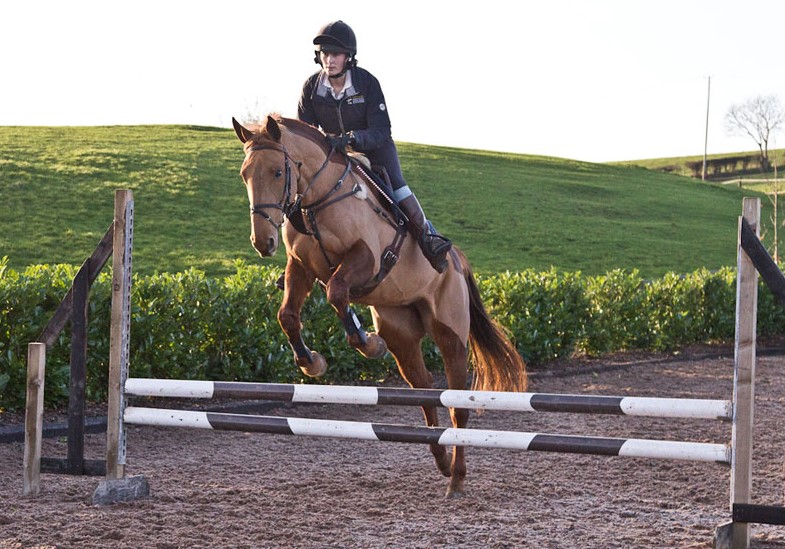
As a riding instructor, you will want to supervise the progression of your lessons for the horses and riders under your care. For initial jump instruction, safety is of paramount concern. The goal is for each student to learn to maneuver the horse in a manner to safely and accurately jump over a fence. Before this new education commences, students should be able to comfortably ride a horse at a walk, trot and canter while maintaining the correct seat. At this point, jumper training in the riding arena can commence.
Start Small
Working with individual students or groups, you can start by laying a pole on the ground and having the rider walk the horse over it. Next, add another pole about one stride apart; 3 feet works for most horses or ponies. Riders can then take their mounts over two poles at a walk. Continue in this manner and gradually increase the number of poles in a row on the ground. Eventually, raise the height of the poles slightly by utilizing cavaletti.
Start Slow
Introduce the exercise of poles and cavaletti at a walk at first to establish a level of confidence with the activity. Students must also work their horses over these items while staying in the correct position and maintaining contact on the reins. Gradually introduce the same activities, but this time add a bit more space between the poles to accommodate the horse’s lengthened stride. Increase the speed to the trot, and eventually the canter.
Build Gradually
Pupils can now be introduced to low jumps. A wing standard horse jump helps improve the team’s ability to aim for the center of the jump at takeoff.
By taking jumping instruction low and slow, and by building the height and complexity of the jumps gradually, your riding students will have a successful initial experience, and you will have prepared them for more advanced jumping instruction.


